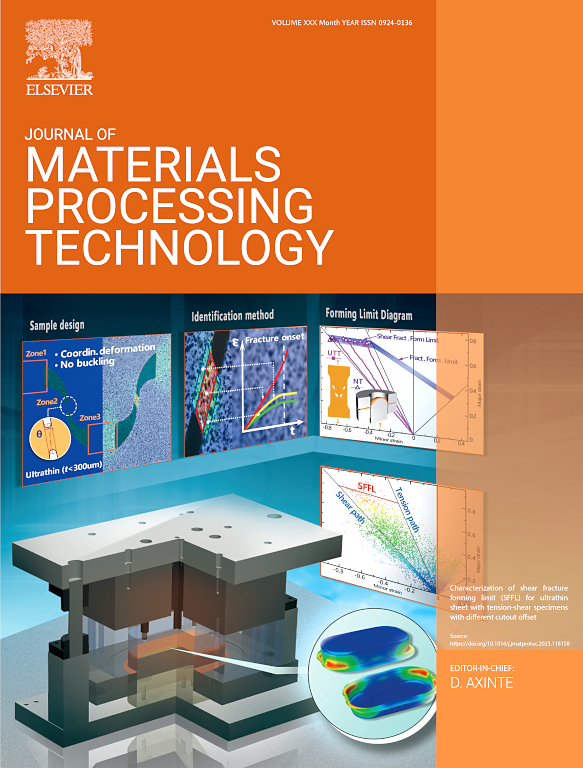Stable and efficient polishing of sapphire surface damage layers using polyurethane polishing wheel based on central supply polishing fluid
IF 6.7
2区 材料科学
Q1 ENGINEERING, INDUSTRIAL
Journal of Materials Processing Technology
Pub Date : 2025-06-13
DOI:10.1016/j.jmatprotec.2025.118938
引用次数: 0
Abstract
During the polishing of hard and brittle material, a polyurethane polishing tool rotating around a single axis often produces an irregular tool influence function (TIF). This phenomenon is closely related to the polishing particle states within the contact region. Under the condition of external supplying polishing fluid, this study first selected two polyurethane polishing wheels with different surface roughness levels. Fixed-spot polishing of sapphire material was then performed to demonstrate the resulting irregular TIFs, and to reveal that the material removal process primarily relies on the polishing particles carried by independent peak features or continuous peak-surface features. Subsequently, staged polishing process using specific peak features on the surface of polyurethane polishing layer were conducted to thoroughly reveal that the formation of irregular TIFs is attributed to the non-uniform consumption behavior of polishing particles. Furthermore, a third polishing wheel was designed to optimize the polishing slurry supply method, allowing for the timely replenishment and renewal of polishing particles in the key contact region. This, in turn, promoted the generation of a regular TIF. Finally, planar polishing was conducted on sapphire surface with a certain defect layer thickness using the three types of polishing wheels. This further validated the stable and efficient polishing capability of the optimized polyurethane polishing wheel when dealing with surface defects of a specific thickness.
采用中央供应抛光液的聚氨酯抛光轮对蓝宝石表面损伤层进行稳定、高效的抛光
在硬脆材料的抛光过程中,单轴旋转的聚氨酯抛光工具往往会产生不规则的工具影响函数(TIF)。这种现象与接触区域内抛光颗粒的状态密切相关。在外源抛光液的条件下,本研究首先选择了两个表面粗糙度不同的聚氨酯抛光轮。然后对蓝宝石材料进行定点抛光,以证明所产生的不规则TIFs,并揭示材料去除过程主要依赖于独立峰面特征或连续峰面特征携带的抛光颗粒。随后,利用聚氨酯抛光层表面特定的峰值特征进行阶段性抛光,彻底揭示了不规则TIFs的形成是由于抛光颗粒的不均匀消耗行为所致。设计第三抛光轮,优化抛光浆供给方式,实现关键接触区域抛光颗粒的及时补充和更新。这反过来又促进了定期TIF的产生。最后,采用三种抛光轮对具有一定缺陷层厚度的蓝宝石表面进行平面抛光。进一步验证了优化后的聚氨酯抛光轮在处理特定厚度表面缺陷时稳定高效的抛光能力。
本文章由计算机程序翻译,如有差异,请以英文原文为准。
求助全文
约1分钟内获得全文
求助全文
来源期刊

Journal of Materials Processing Technology
工程技术-材料科学:综合
CiteScore
12.60
自引率
4.80%
发文量
403
审稿时长
29 days
期刊介绍:
The Journal of Materials Processing Technology covers the processing techniques used in manufacturing components from metals and other materials. The journal aims to publish full research papers of original, significant and rigorous work and so to contribute to increased production efficiency and improved component performance.
Areas of interest to the journal include:
• Casting, forming and machining
• Additive processing and joining technologies
• The evolution of material properties under the specific conditions met in manufacturing processes
• Surface engineering when it relates specifically to a manufacturing process
• Design and behavior of equipment and tools.
 求助内容:
求助内容: 应助结果提醒方式:
应助结果提醒方式:


